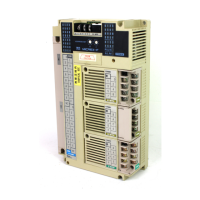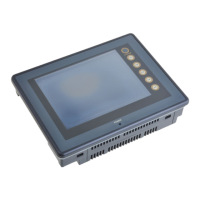4-13
Section 4 Installation and Wiring
4-2-2 Wiring to power-supply, I/O and ground terminals
(1) Precautions
• If the power supply to be used for the processor module has voltage uctuations that exceed the specied range, a voltage
stabilizer must be used.
Voltage
stabilizer
PLC
Power
supply
• The power supply must not generate excessive noise between power lines or between lines and ground. For details on
countermeasures against excessive noise, see “4-1-3 Control panel mounting (protection against noise).”
• The power supply wiring to the processor module must be separate from wiring for I/O devices and for power equipment.
PLC power supply
Isolation
trans-
former
To coil
I/O device power supply
Main control power supply
CR
PLC
• The distance between the isolation transformer and the processor must be as short possible and the wire size must be
twisted. To minimize voltage drops, the wire size must be as large as possible (1.25mm2)
• If I/O wiring cannot be separated from the main circuit cables or power cables, bound shielded cables must be used for each
I/O unit and the shield must be grounded at the PLC end.
• The 24V DC I/O cables must be separated from 100V AC and 200V AC cables.
CAUTION
Be careful of the following items when you connect the external power supply (service power) cable of the main unit
(AC power supply specification).
1) Make sure that output current is below the level specified.
2)
Voltage is cut off if the output is short-circuited (overloaded) during operation, and restored when the error is corrected.
(The PLC does not detect the error and continues to run, but externally supplied voltage is lost, resulting in a system error.)
3)
In the short-circuited (overloaded) condition, the PLC won’t start even when the power supply is turned on.
4)
The power supply is a switching regulator. When you connect a high-sensitivity sensor or the like, be sure to check for
any influence from switching noise.

